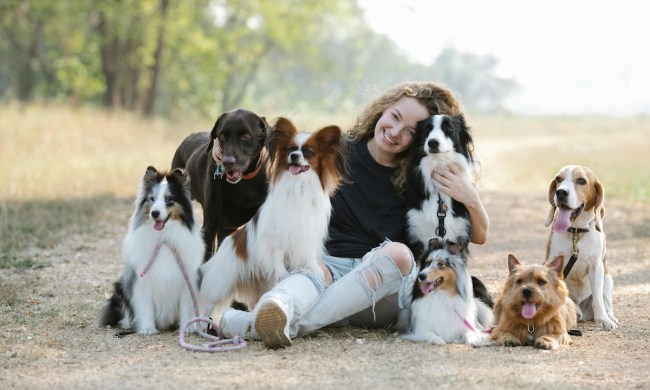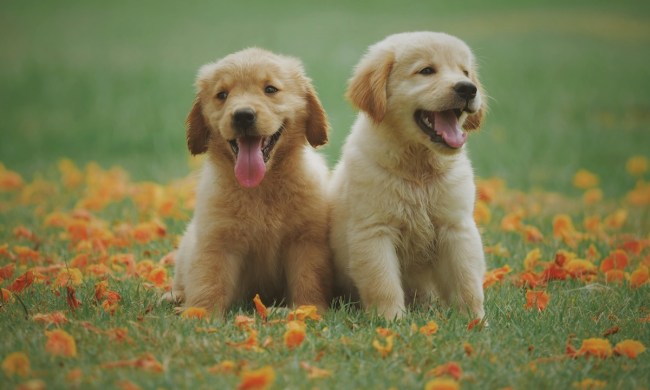Most people dream of getting a pet for Christmas at least once in their lives, but actually having that pet is an entirely different story. Before you head out to buy your daughter that pony or your boyfriend the puppy he’s always wanted, you may want to think about whether that animal is the right one for your home. Choosing the right pet is no easy task!
That being said, it’s easy to feel overwhelmed by all the facts and figures. There’s a lot to consider! After all, adopting a pet means caring for a living being, so it’s not a responsibility you should take lightly. Keeping your buddy healthy and happy should be your priority – are you ready to take that on?
Here are several things to reflect on before choosing the right pet:
Consider your future pet’s living space
Whether you live in a studio apartment or a 50-acre ranch, it’s important to think about what kind of space you can dedicate to your new pet. If you have plenty of table space in a small dorm room, for example, you can consider animals that will thrive in a small tank or aquarium. If you have a spare barn, though, you can think bigger.
It can be difficult when it comes to dogs, as their needs differ depending on their breed, age, and size. A calm toy breed will likely not mind apartment living, while an active larger dog will definitely need more space. They’ll need spots to eat, play, love (sorry, not sorry), and snooze the day away – do you have the room?
Research your responsibilities
Keeping your pet healthy and happy will require some time and effort, so you should prepare yourself before committing to caring for an animal. Do your research: how often does each species need to eat? What do they eat? What kind of exercise do they enjoy? Do they hibernate or go through any seasonal changes?
Don’t wait to look into any animals you’re interested in; you should be ready to care for them the moment they come home. Go shopping beforehand if you can to give yourself a head start. And don’t forget to schedule their first vet visit ASAP!
What activities do you want to do with your new pet?
When you imagine yourself spending time with your new best friend, what are you doing together? Just hanging out? Running through the park?
If you are looking for a pet to keep you active, you’ll want to look for a dog who enjoys exercise just as much as you do. Alternatively, any pet that needs a small cage or aquarium will make the perfect desk buddy while you work. Looking for a more casual garden buddy? A rabbit or outdoor cat might be the missing link!
Don’t be afraid to do research and ask questions, especially if you’re in the process of meeting an animal – no two pets are the same! Even dogs of the same breed, for example, can have completely opposite personalities.
Think about everyone in your home
Just because you’re ready to care for a certain pet doesn’t mean everyone at home is. Before you commit to taking in a new friend, make sure your partner, kids, relatives, or roommates are just as into the idea as you are. You may need to set some boundaries to ensure peaceful living for everyone, no matter the species.
Split up the work as you see fit, but make backup plans, too. Someone will need to be able to care for your pet when you go out of town or if an emergency should arise, so it’s best to prepare sooner rather than later.

What can you afford?
No matter what species of animal you choose to add to your family, you’ll need to make a vet visit or two – at least. This can get expensive quickly, so brace yourself! Of course, you can avoid unnecessary veterinary costs by keeping your pet healthy, but even routine check-ups can make a dent in any wallet. Oh – and don’t forget toys, food, supplies, and insurance!
Pets have different schedules
Even though you might like your work schedule, your pet may not. Every animal has their own schedule for feeding, exercise, and bathroom breaks, so it’s important that someone is home to care for your buddy’s needs. This might be a lot easier if you’re working from home.
Helping a pet get acclimated to a new home might take more time and effort than their long-term care. The timing of bringing in a new pet can be just as vital as the pet themselves, so be sure this is the best time. You don’t have any vacations coming up soon, do you?
We know it’s a lot to think about, but it’s important to be 100% sure before taking in a living being. Every animal deserves a patient, caring, or loving home, after all. It’s okay if you can’t decide which pet is the right one for your home this season – there’s plenty of time to adopt a new friend! If you do feel ready though, you have the adventure of a lifetime ahead of you!




